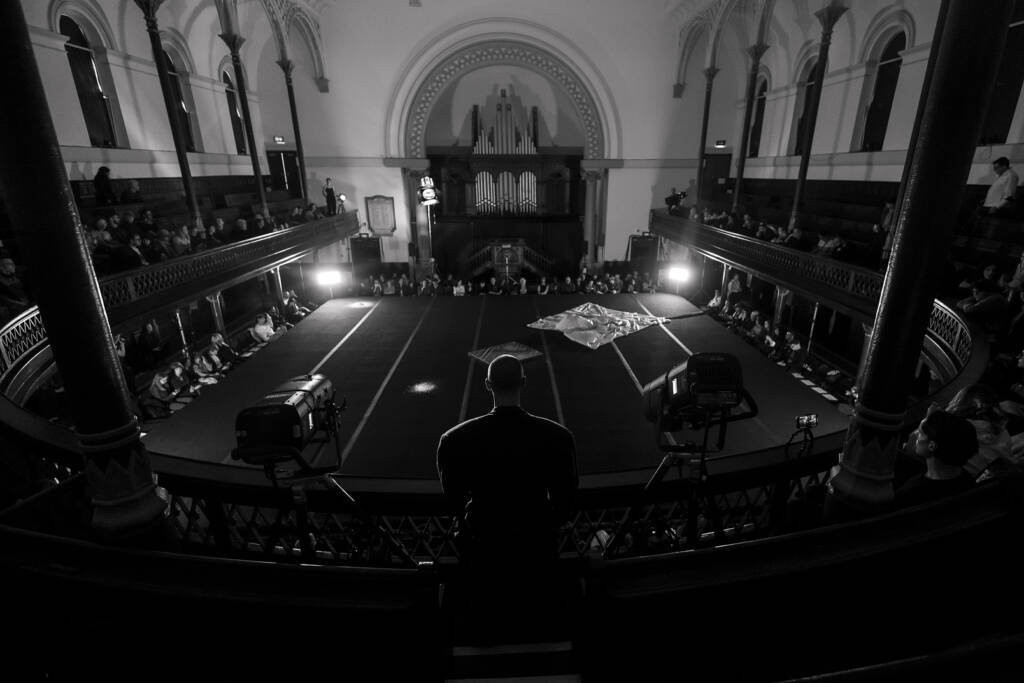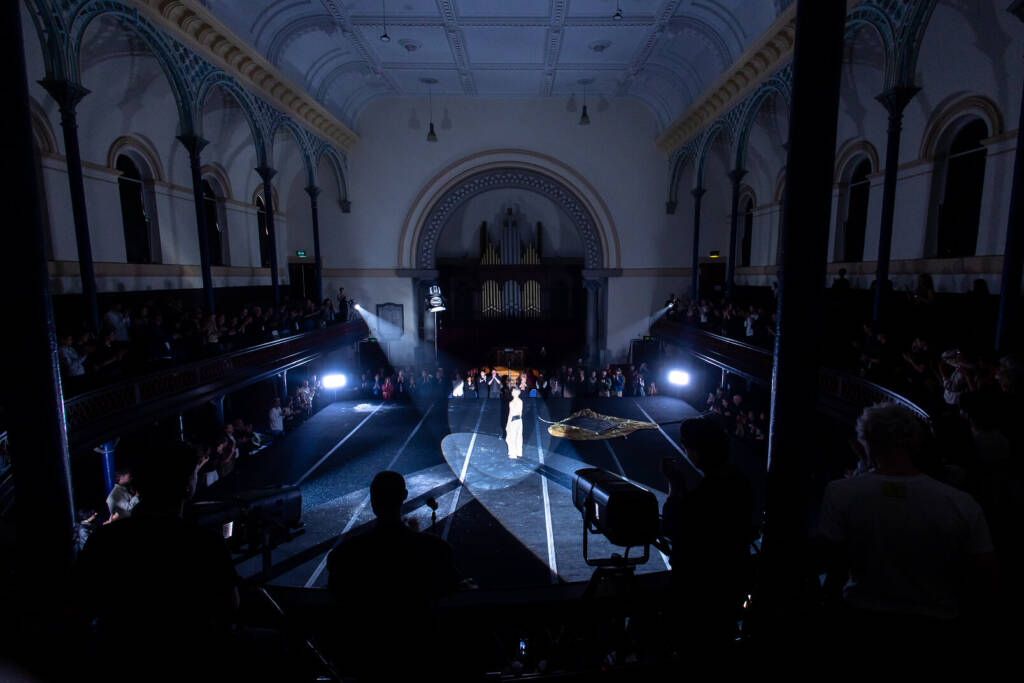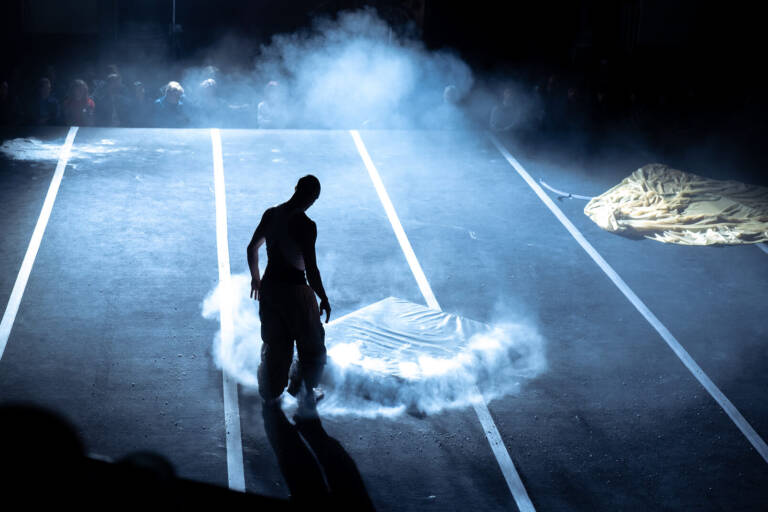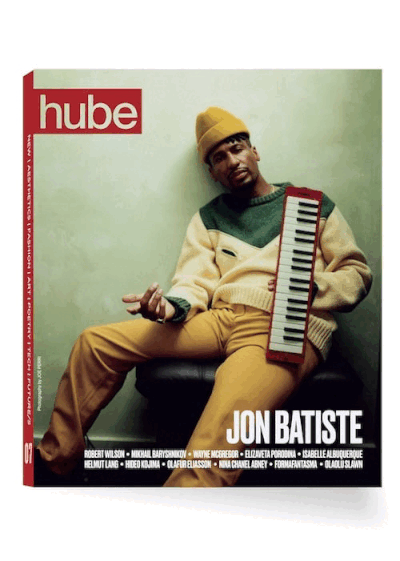
Bornsick, 2025, performance still, Round Chapel, 21-22 May 2025, London
Co-commissioned by SERPENTINE and EAF (EDINBURGH ART FESTIVAL), photography by GENEVIEVE REEVES. Courtesy the artist, Serpentine and EAF

Bornsick, 2025, performance still, Round Chapel, 21-22 May 2025, London
Co-commissioned by SERPENTINE and EAF (EDINBURGH ART FESTIVAL), photography by GENEVIEVE REEVES. Courtesy the artist, Serpentine and EAF
This May, as part of Serpentine’s Live programme, Lewis Walker premiered Bornsick at London’s Round Chapel, a raw and honest piece that blends dance, gymnastics, and personal storytelling into something entirely its own. Co-commissioned by Serpentine and Edinburgh Art Festival, the show explores what it means to live in a body shaped by outside forces, family, tradition, gender, and how we might begin to unlearn them.
In this conversation, Lewis Walker invites us into the world behind Bornsick, a performance shaped by memory, queerness, movement, and unlearning. Speaking openly about their journey as a solo artist, their roots in competitive gymnastics, and the challenge of stepping beyond inherited roles, Walker reflects on what it means to make work that’s both deeply personal and radically open.
hube: Bornsick suggests that human identity is an endless act of referencing and reshaping. How do you view the concept of authenticity in a world where everything is influenced by what has come before? Can we ever break free from this cycle, or do you see this paradox as an inherent part of our existence, both as individuals and as artists?
Lewis Walker: I see authenticity less as a fixed destination and more as a fluid concept. Especially in the context of New Age thinking, self-development, and self-improvement, authenticity is often framed as a goal, something to find or achieve. But I don’t believe that’s quite right. That framing feels overly individualistic, as if we can somehow extract a pure “self” that exists apart from everything we’ve absorbed.
To me, authenticity is actually about acknowledging that we’re always referencing, borrowing, and reshaping. Our identities are built through what we take in, what inspires us, what repels us, what’s handed down to us. When I’ve longed to be ‘authentic,’ I now realise it was often a desire to feel separate, to define myself in opposition to others. But the paradox is that real authenticity isn’t about separation, it’s about integration. It’s about owning the fact that we are relational beings, shaped by countless influences, and finding meaning in how we reclaim and reinterpret those influences as our own.
As for breaking free, I don’t think it’s about escaping the cycle entirely, but about becoming conscious of it. That’s where inner work, therapy, journaling, group work, recovery programs can make a difference. These processes help us see the patterns we’re living out and give us the tools to respond with more intention. So no, I don’t think the desire for authenticity is inherently wrong, but I do question the way it’s often pursued, as a kind of purity. I think the real beauty lies in the messiness of inheritance, influence, and transformation.
h: Your performance involves a character being built piece by piece. How do you use gymnastics and dance to embody this process of layering and unlearning, and what does this say about the construction of identity, particularly in the context of the queer body?
LW: My life has been made up with learning different techniques, gymnastics, dance, ballet, tap, modern, contemporary, all of which influenced the construct and the body. They are really useful at a certain time to build this construct of who you are and to learn a certain technique. But I think there comes a point where maintaining the rigidity of technique is no longer useful. You are built to dance like a male, look a certain way, dress a certain way, and especially within gymnastics, where you lose points if you don’t conform to the given technique.
Now, I can use dance as an influence, but what’s different is that, in this current era, I’ve been able to reassess, relearn, and use movement to re-identify myself, drawing from queerness as a reference. When I retired as a gymnast and retrained as a dancer, or rather, I was able to understand what happened to my body and mind in competitive environments. I had to figure out how to relearn a sustainable relationship with my body and practice. I still use dance and gymnastics as a technique, but now I’m figuring out how I can intuitively work with them. And what does that look like? How do you queer the movement? How do I queer the body? It’s a constant reassessing: Am I doing this movement because I’ve been taught to do it, or is there another way that feels more innate.
What I find particularly interesting is that I grew up as a very queer child. I loved pop music in the 90s, watching Britney Spears, Spice Girls, and naturally imitating them. I danced in this hyper-feminine way. But when I began dance training, first at secondary school, then as an international gymnast, I realised you couldn’t move like that. It wasn’t celebrated, especially in competition. As I said before, you get marked down for such things. So you slowly unlearn your most natural inheritance, the things that you really desire. So, this whole process is about learning a unique, skilled way of moving. Since gravitating around queer people, it’s really been about unlearning heteronormative conditioning, because the culture around me I could never make sense of.
I want to naturally express myself, and I have not always been brave enough to be how I instinctively am in the world, even now. It’s a systemic issue of the gender binary. We have two ways of dancing: male and female, and then something in between. It’s hard for this to be palatable for everyone, so it’s usually much easier to simply conform to one or the other.
An honest approach to how people respond to my work is that I fuse both parts of who I am—the learned, conditioned behaviour and the more inherent characteristics I was drawn to as a child. These are the things that resonate with people. I’m not fully on the side of conditioning, but neither am I radically on the more transgressive side. When I find this middle ground, it feels like a sweet spot for me, because I’m not disregarding everything I’ve learned, but I’m bringing back the essence of what I let go of.

